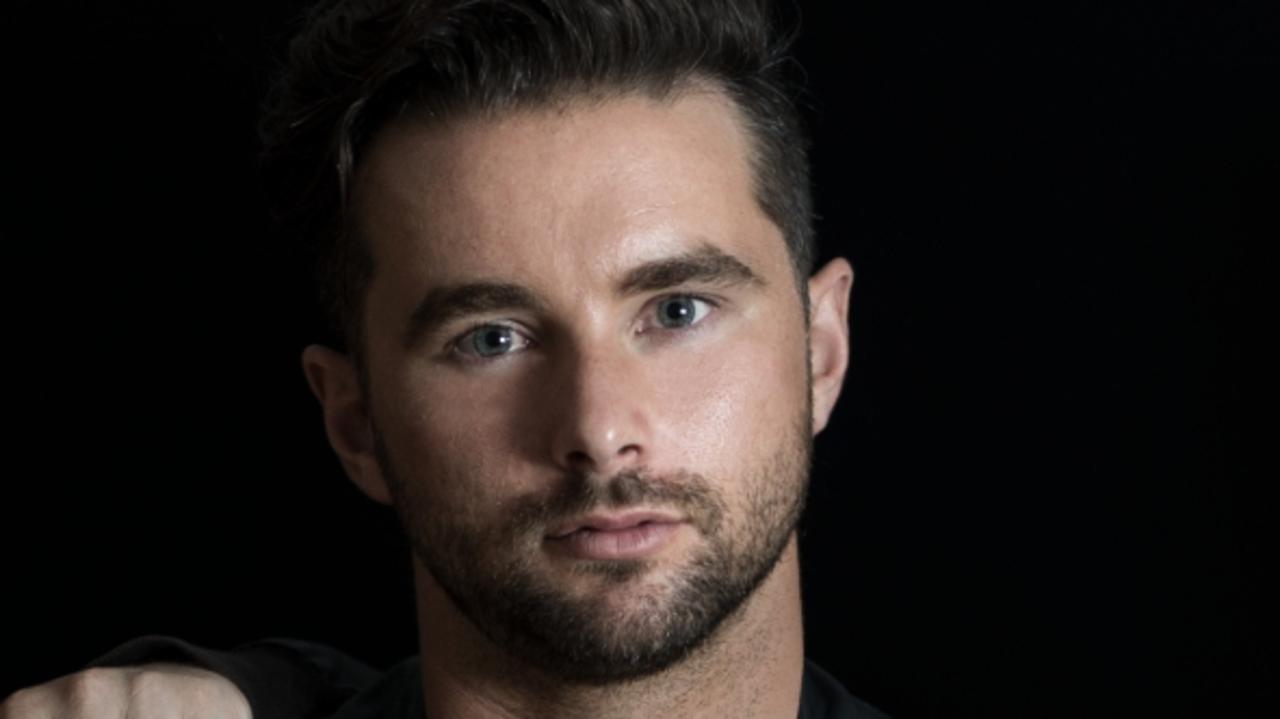Grinspoon has Queensland covered on Guide to Better Living 20th anniversary tour
IT all started when Aussie rockers Grinspoon sent a cassette into a radio station band competition. More than 20 years later, the band are back on tour to celebrate the 20th anniversary of their debut album.
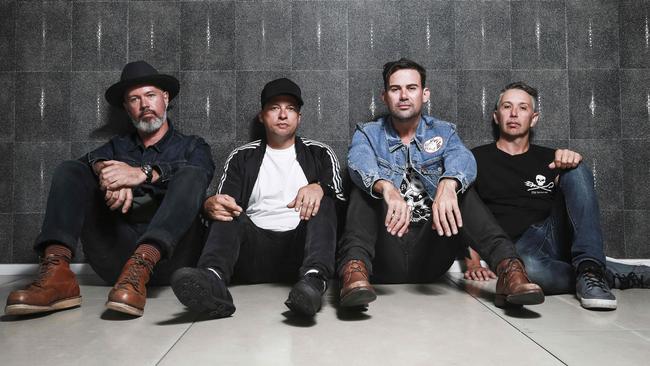
Music Tours
Don't miss out on the headlines from Music Tours. Followed categories will be added to My News.
IN A NONDESCRIPT building on the fringe of inner Brisbane’s West End, the four members of revered Australian rock band Grinspoon are meeting up to start rehearsing for their first major tour in almost four years. When The Courier–Mail heads along to catch up with the members of the band for a chat about their forthcoming 30-date Australian tour to celebrate the 20th anniversary of their debut album, Guide to Better Living, bassist Joe Hansen and drummer Kristian Hopes are the first to arrive, and set up a makeshift pew in the corner of a cramped room.
Hansen and Hopes – along with frontman Phil Jamieson and guitarist Pat Davern – have been playing together for more than half their lives since forming in 1995 after a pub jam in their then-hometown of Lismore, in northern NSW.
Grinspoon were discovered by the ABC’s national youth radio broadcaster Triple J as part of the station’s first Unearthed competition in July 1995, for their song Sickfest, a three-minute slice of metal-tinged punk rock. In its various iterations since, Unearthed has gone on to give exposure to artists including Killing Heidi, Missy Higgins, Ball Park Music, Courtney Barnett and Grammy-winning electronic artist Flume, but as Hopes and Hansen explain, the competition was an unknown quantity at the time.
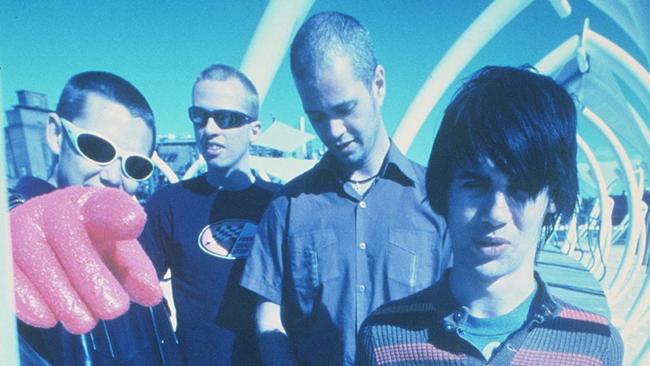
“No one sort of knew what to expect, it was just a bit of a laugh,” Hansen explains of the band’s Unearthed entry. “When we won, because we’d only been a band for a few weeks, there were a fair few more-established Lismore bands that got the shits with it. They had been in bands for a couple of years, done all these recordings and then we won it. We had been a band for about five weeks.”
“Yeah, it wasn’t long,” Hopes agrees. “That was the first recording we did, the demo for the competition.”
“We recorded that onto a cassette, it was Sickfest and another song – Throw – and we’d really only written those two songs,” Hansen says. “I think Phil had to hock his guitar to pay for the recording. He had an old (Fender) Mustang. We got it back in the end, though.”
Although Unearthed gave the band an undeniable kickstart, Hansen is quick to point out it took a lot of hard work to stay on the public radar, and despite what a potted history of Grinspoon might suggest, labels weren’t exactly clamouring to sign the band immediately after their win. “On the back of Unearthed we did get a lot of airplay and we did get a few support slots and stuff like that,” he says. “We sort of thought we were going to become big rock stars overnight, which unfortunately didn’t happen.”
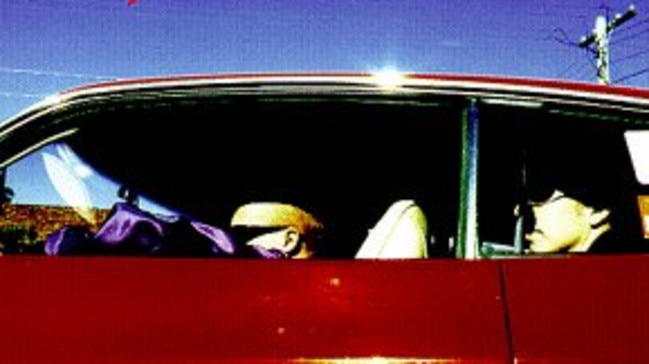
Rather than wait around for major labels to start knocking, the band hooked up with small Brisbane independent label Oracle and recorded, mixed and mastered what would become their self-titled EP in two days at Grevillea Studios in Albion, in the city’s inner north. As Hopes recalls, “we had a couple of months of airplay and then it all kind of shut down”.
The door to the rehearsal room opens slightly and Jamieson wanders in and looks in our direction. “Hey! Who let the rhythm section do an interview?” Jamieson jokes, before convivially introducing himself but opting to let Hopes and Hansen continue without him.
Hopes continues: “We were all like, ‘hmmm, what do we do now?’ Because Triple J was national we had enough airplay to go and do a few shows in other areas and states and whatever, so we rang a few publicans and just basically hassled people for a while there.”
Among the people the band were “hassling” for gigs were the organisers of Homebake music festival, which was about to hold its inaugural event at Belongil Fields, Byron Bay. Hopes says that after much haranguing from guitarist Davern, organisers caved in and gave Grinspoon the opening slot at the festival, which took place in January 1996.
“That was a drama to get that, they weren’t up for it but they gave it to us in the end, so it was a really good kick-starter for us. After we started doing a few things like that, Triple J started playing our stuff again.”
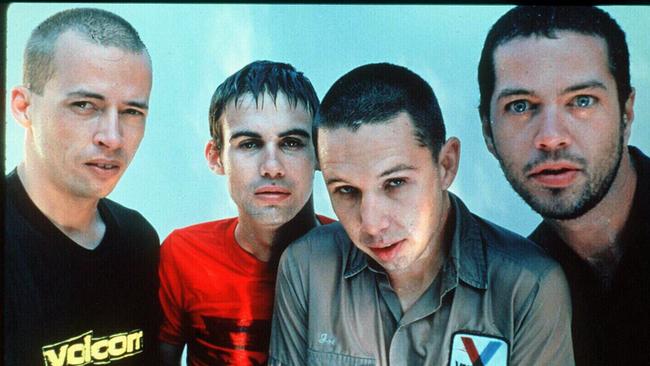
Grinspoon went on to sign with Grudge Records, a subsidiary of major label MCA (which has since merged with Universal) and released their second EP, Licker Bottle Cozy – which was engineered and produced by Phil McKeller at Sydney’s Ultimo Studios – in December 1996. The band reconvened with McKellar in February the following year at Rockinghorse Studios in Byron Bay to record what would become their double-platinum-selling debut album, Guide to Better Living. A melange of metal, rock and pop-punk influences, GTBL debuted at No. 11 on the ARIA charts and produced two top 40 singles, with three songs, Just Ace, DCx3 and Repeat, earning spots in Triple J’s Hottest 100 the following January.
Grinspoon became regulars on the Australian touring circuit over the next couple of years, performing their own headline shows and playing at festivals including Brisbane’s Livid; Falls in Lorne, Victoria; and the multiple-date Vans Warped Tour. The band became renowned for their hard-partying reputation and when asked whether this was well-deserved or perhaps a little overstated, Hopes is quick to respond. “Oh, no, it was probably very well-deserved, I’d say,” he chuckles. “We had a fairly good crack at it.”
“I think we embraced the situation,” Hansen agrees. “Rather than standing around having cups of tea, you might as well get into it, and the thing is, everyone always says that about us but we were always doing it with other bands. There’s always this ‘Grinspoon were the ones who were the party animals’, yeah, but like what about all the other bands that were with us?”
The pair laughs heartily, before Hopes interjects: “We were pretty consistent, though … but we had a good time, and it was all pretty exciting. Rock ’n’ roll is the only sort of job where you get paid to drink and stuff.”
After the success of Guide to Better Living in Australia, US labels started to take notice, and Grinspoon spent much of 1998 touring Stateside, sharing line-ups with everyone from metal groups such as Anthrax to nu-metal band Godsmack and post-grunge warblers Creed. While their genre-hopping proved to be a virtue in Australia, endearing them to a wide array of audiences, as Hansen explains it proved somewhat of a stumbling block in the notoriously hard-to-crack US market. The band were too punk for the metal crowd, and too metal for the punk-rock kids.
“They have a tendency to need to pigeonhole you, whereas in Australia we just do whatever the hell we want,” Hansen says. “They didn’t know where to put us – were we metal, were we punk? They weren’t quite sure, and we ended up doing all these bills playing with these Korn-style bands with 17-string basses and stuff, so we kind of got targeted towards metal stuff, and then Phil would come on with his little hair clip in his hair and a skirt and start singing Just Ace. And you could see these guys with their 17-string basses just wanting to kill us.”
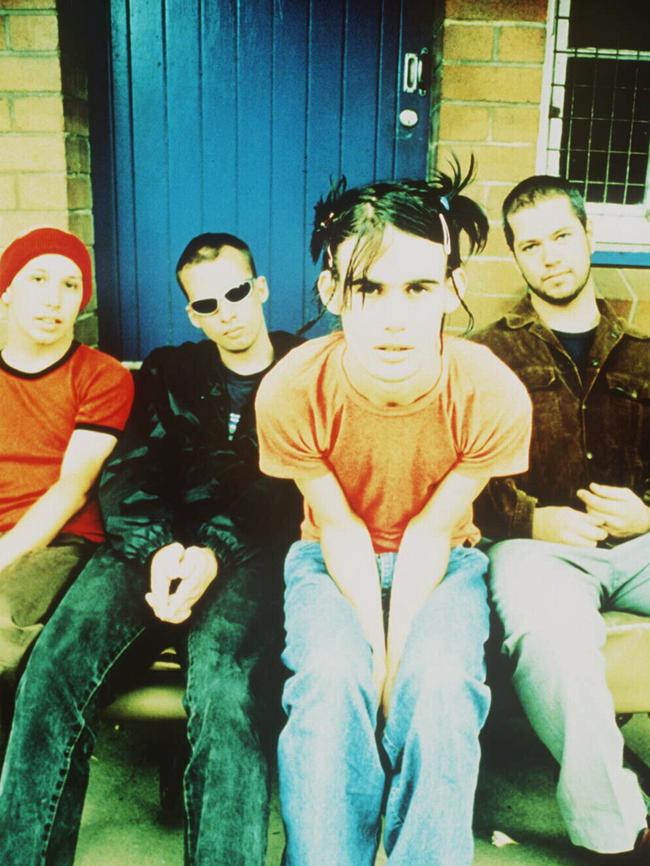
The reissue of GTBL amasses a whopping 49 tracks, including B-sides and unreleased tracks and live sets from the 1997 Falls Festival and legendary New York venue CBGB. The band played the venue a couple of times, including on one notorious occasion when Hopes fell offstage a few songs into the set. Asked how he feels about that particular show when he looks back on it, Hopes replies sardonically: “Proud, very proud”, and he and Hansen laugh hysterically. “I go through it with my kids on wintry nights in front of the fire.”
The pair concedes there may have been some self-sabotage involved when it came to gaining a foothold in the US market, but neither has any regrets. “Oh, absolutely there was self-sabotage, from (Jamieson) as well,” Hopes says. “We could have been a lot slicker in the day and probably our careers might have excelled a little further but we weren’t about that, anyway, it was never going to happen. You can lead a horse to water … ”
Hansen agrees, but looking back he remains satisfied with Grinspoon’s achievements, and with the fact he and his bandmates remained true to themselves. “What we built our whole thing on over here … you can’t just go over to the States and pretend you’re a corporate rock band; it just wasn’t going to work,” he says.
In addition to performing at a variety of Australian festivals – including multiple Big Day Outs, Byron Bay’s Splendour in the Grass and Soundwave – Grinspoon have performed at some of the country’s biggest non-musical events, including the 2004 NRL Grand Final, the closing ceremony of the Commonwealth Games in Melbourne in 2006, and made a triumphant return as the pre-game entertainment for last week’s State of Origin match in Sydney. “When Pat came down off the top of the MCG with pyrotechnics coming out of his guitar on a bungy line or whatever it was; that sticks out a bit,” Hansen says. “And playing the NRL grand final was awesome,” adds Hopes.
Grinspoon went on to release a further six albums after GTBL, including platinum-selling follow-up Easy in 1999; 2002’s New Detention, featuring the single Chemical Heart, which reached No. 2 on Triple J’s Hottest 100; and their most recent outing Black Rabbits, which debuted at No. 8 on the ARIA charts on its release in 2012.
Although everyone in the band is itching to play again, Hopes readily admits he was burnt out by the time the touring cycle for Black Rabbits ended. The band announced they would be going on an “indefinite hiatus” following their show at Brisbane’s Eatons Hill Hotel in December 2013, and Hopes says that from his perspective at least, the future of the band was uncertain at best. “To be totally honest I was kind of over it,” he says. “We’d just been touring for so long and I just didn’t want to do it any more and it was a case of who knows if we were going to come back.”
“There was talk of just totally breaking up, and then it was ‘hang on a minute, that’s too full-on, we can’t just totally cut the cord after all this time’,” Hansen says. “That was a bit too intense. By taking the hiatus we kind of left the door open but we didn’t have any solid plans at that point.”
During the downtime, Hansen, who now lives at Red Rock, near Coffs Harbour, spent some time “on the other side of the fence”, working on logistics at festivals including Splendour in the Grass and Festival of the Sun at Port Macquarie, on the mid-north coast of NSW. Davern, who with his wife Katya owns book and record store The Finder’s Club, at Bangalow in northern NSW, co-wrote a children’s book and recorded an accompanying ARIA-nominated kids’ album, Alexander the Elephant in Zanzibar. Jamieson – now based in Port Macquarie – performed some solo shows and dipped his toe into musical theatre, playing the role of St Jimmy in the Brisbane season of American Idiot at QPAC earlier this year, while Hopes ran a home handyman business in Brisbane. Grinspoon did regroup for a handful of shows with Cold Chisel in late 2015 but the GTBL anniversary tour, which will include Queensland shows in Brisbane, Cairns, Townsville, Airlie Beach, Noosa, Ipswich and the Gold Coast, will be the band’s first headline dates in almost four years. “The prospect of playing our own shows again is pretty exciting,” Hansen says.
On the way out, The Courier–Mail crosses paths with Jamieson, who’s ordering a coffee from the cafe next door to the rehearsal studio. When asked about preparations for the tour, he seems happy with how things are progressing. “We’ve played through it once, the album,” Jamieson says. “Even when I’m playing it in that room in there … there are some funny lyrics on there but it still sounds really current. It’s aged well, put it that way.”
When pressed about what fans can expect from the shows on this tour, Jamieson briskly replies: “Guide to Better Living – from start to finish”.
“If they listen to Guide, they’ll get a very good idea what they can expect.” ■
Guide to Better Living 20th anniversary deluxe edition, out now. Grinspoon are touring Queensland until Sept 2: grinspoon.com.au
Originally published as Grinspoon has Queensland covered on Guide to Better Living 20th anniversary tour

